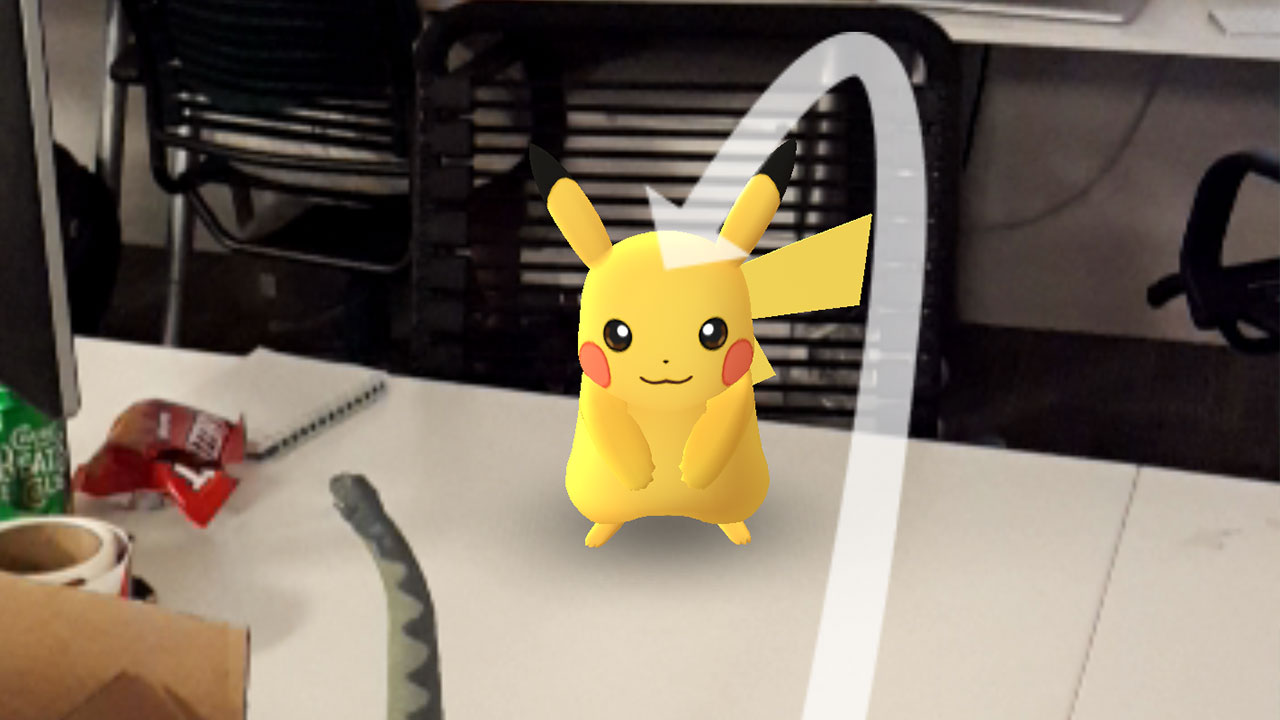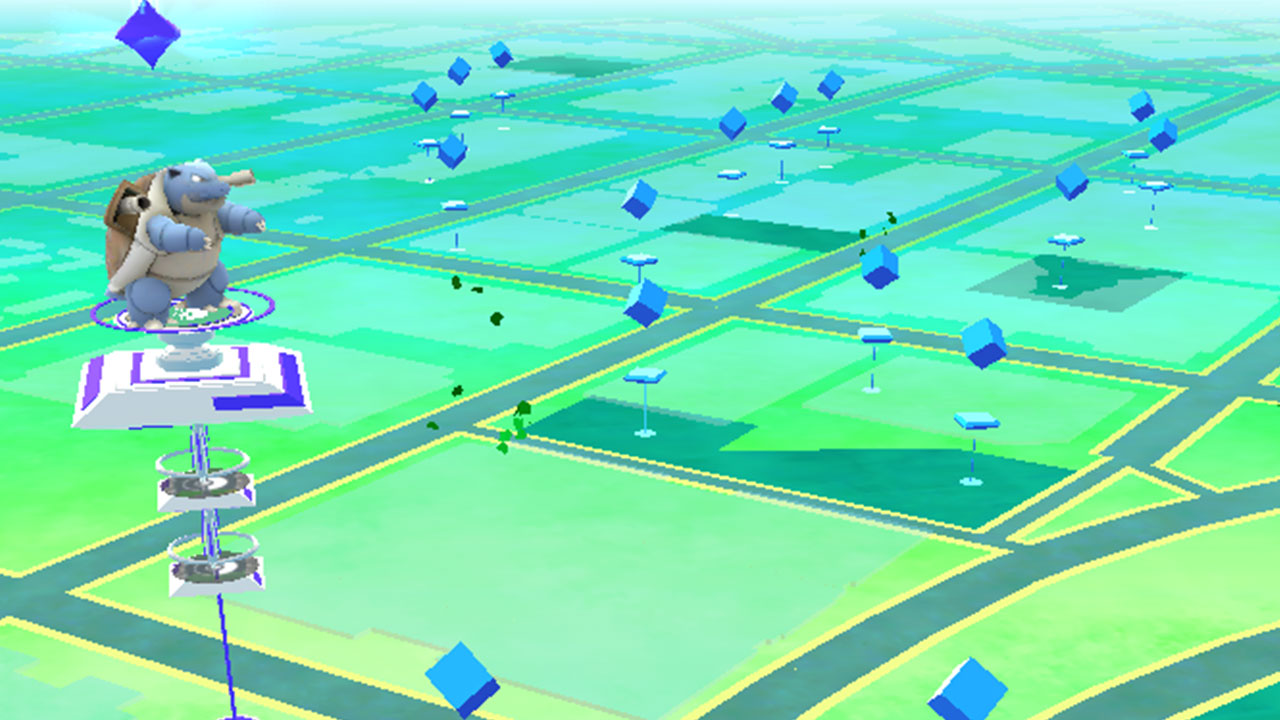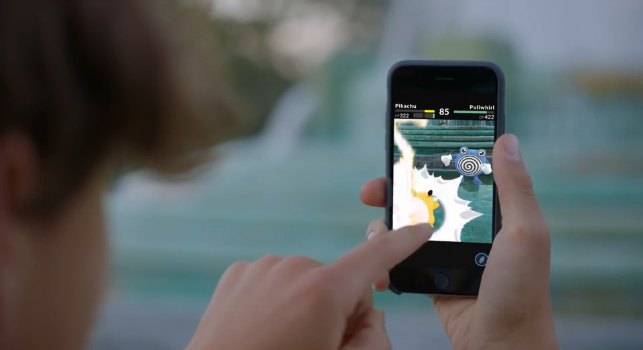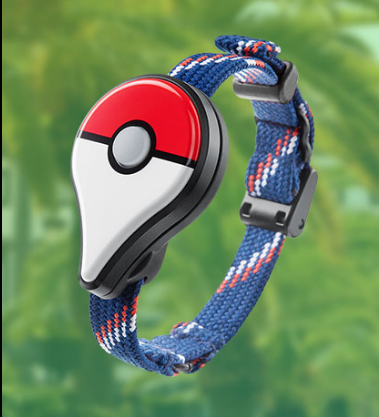Welcome! You, like the rest of Planet Earth, are playing Pokémon Go and want to learn more about how you play. We've been playing the game since the beta, so we're happy to share what we've learned thus far with those less fortunate. Follow along below for the answers to some of the most pressing Pokémon Go questions — and let us know in the comments if you have any others. Check back, since we're updating this guide regularly.
If you happen to be in the "what's a Pokémon" stage of your investigation, we've made an additional guide: Six Pokémon Go tips for the ultimate beginner. Read that, then come back here!
Must Read
How do I log into the game?
There are two options for logging into Pokémon Go. The easier method is to use an existing Google account. Otherwise, players can either sign in with or sign up for a Pokémon Trainer Club account, which comes with added privileges. These include a subscription to a monthly newsletter, which sometimes offers download codes for rare Pokémon.
Can I name and customize my trainer?
You sure can! Nicknames must only be spelled with letters and numbers, and if you have a common name, you may already be out of luck: There are no duplicates allowed. (To whoever already took the name "Allegra," we've got our eye on you.)
Naming aside, there are several skin tones, hair colors and outfits to choose from. The selection is slightly less varied than what's available in Pokémon X and Y, for reference.
While at first you were locked into your trainer's initial customization choices, an update at the end of July gave players the option to change up how their character looked whenever they want.
Do I get a starter Pokémon?
Short answer: Yes.
Long answer: Once your trainer has a name, Professor Willow — this game's leading Pokémon scholar — will walk you through catching Pokémon. He doesn't outright give you a starter, instead directing you to the open map around you, where a Bulbasaur, Charmander and Squirtle appear out of nowhere. Trainers can choose which of the three they want to catch and, at the conclusion of the world's easiest battle, whoever they picked will now be theirs.
There's a secret fourth starter Pokémon, however. If Bulbasaur, Charmander and Squirtle aren't quite your speed, there's a way to choose Pikachu instead. The method, which involves walking away from the initial trio multiple times, is a little bit complicated, but if Pikachu's your favorite, it may be worth the effort. Check out our breakdown on what you have to do to start the game with Pikachu for more.
This is the biggest change from the recent beta, which some of us tried and didn't quite love late last month. In that version of the game, testers embarked upon their Pokémon journeys unaccompanied.
Sweet! Can I name my Pokémon?
Yep. No worries if you forget to do so once you catch one; you can always go into the Pokémon section of the menu and edit your monsters' names.
How do I get more Pokémon?
Catching is something that isn't especially well-explained in Pokémon Go. As you traverse the real world, as represented on the in-game map, you'll occasionally run into tufts of rustling grass. There's also a handy meter indicating which Pokémon are nearby on the lower right-hand corner of the map.
Must Read
By default, this part of the screen shows the three closest Pokémon to your physical location; clicking on it will reveal a wider look at the available Pokémon to catch. Each one has anywhere from one to three footprints underneath it, with one indicating that it's especially close to you and three meaning that you'll have to keep walking to find it.
At least, that's how it's supposed to work. A "three-step" glitch rendered the nearby tracking system effectively useless, and Niantic has gotten rid of footprints altogether as of a late-July update. For now, keep moving for awhile; a Pokémon will eventually appear on the map, and clicking on it will initiate a battle.
Battles aren't between two Pokémon, though. They're between a Pokémon and your ability to swipe a Poké Ball in their direction. When you engage a Poké Ball, a colored ring will appear around the opponent. These change in size after each capture attempt. Throwing a Ball during a smaller window seems to be more effective, based on our time with the game, but that's a part we're still trying to figure out.
For more on the particulars of Pokémon catching, check out our explainer.
Where can I find a Clefairy, or a Pidgey, or a Horsea, or ...
The point of Pokémon Go is to travel around, exploring different geographic areas to find appropriate Pokémon. In a small town, expect to find a lot of normal- and grass-types. Going near water will attract water Pokémon. Playing at night brings out more nocturnal creatures, like Clefairy and Gastly.
In our, oh, 12 hours with the final build of the game, we haven't been able to explore too many diverse places yet. It remains to be seen if iconic landmarks bring rarer finds. Several fansites exist that have real-time maps of which Pokémon have spawned where, however, although Niantic is reportedly shutting down some of the more popular ones.
:no_upscale()/cdn.vox-cdn.com/uploads/chorus_asset/file/6727181/pokemon_traits_2.0.PNG)
How many generations of Pokémon are available in the game?
As of its latest version, there are three entire generations of Pokémon to find in Pokémon Go. That puts the total count somewhere around the 350 mark. Not every monster has been found from these generations, however; that includes certain legendaries from third-gen games, as well as mythical monster Celebi. But if you're a fan of, say, Mewtwo or Groudon, they are both in-game so that you can add them to your collection.
Are there items to help me find, catch and train Pokémon?
There are a variety of items to purchase that aid capturing and upgrading monsters. These can be found in the shop, and include a number of Poké Balls, as well as the following:
- Incense: "Incense with a mysterious fragrance that lures wild Pokémon to your location for 30 minutes."
- Lucky Egg: "A Lucky Egg that's filled with happiness! Earns double XP for 30 minutes."
- Egg Incubator: "A device that incubates an Egg as you walk until it is ready to hatch. Breaks after three uses."
- Lure Module: "A module that attracts Pokémon to a PokéStop for 30 minutes. Other people around the PokéStop can also benefit from the effect."
Each of these items cost Pokémon Coins (or PokéCoins) which, unsurprisingly, must be bought for real money. Take a look below to see how much the game is selling PokéCoins for. If you'd rather not spend the cash, prepare for battle: Standing undefeated at your gym will also net you PokéCoins.
:no_upscale()/cdn.vox-cdn.com/uploads/chorus_asset/file/6749761/Screen_Shot_2016-07-06_at_11.21.56_AM.0.png)
Okay. Now, back up: The heck is a PokéStop?
These are notable locations in the vicinity. They're represented by a blue marker on the map. Clicking on the marker shows a picture of the building, monument, park or what have you. Swiping that picture will often net you a handful of items, like some Poké Balls or a Pokémon Egg that, when hatched, could add a new Pokémon to your collection.
You should be able to locate them easily in-game, but for those who intend to travel across the land, searching far and wide for international Pokémon, some fans have already created maps to help you plan your journey. The location data for PokéStops has been culled from Ingress, Niantic Labs' previous game, meaning those familiar with its map will know where to look for those landmarks.
PokéStops are also some of the best places to look for Pokémon. When you discover one with swirling pink flowers around it, that means another local Pokémon Go player has attached a Lure Module to it. That's your signal to start heading toward that particular PokéStop, as several Pokémon are bound to spawn around it left and right.
Do those include gyms? There are gym battles, right?
Pokémon Go does include gym battles, but battling is one of its biggest changes from the Pokémon games many of us know and love. Gyms are interspersed around the world, just like PokéStops. Trainers have to be at level five in order to face other trainers, but these battles are typically one-on-one against another trainer's team.
Every Pokémon has a combat power, which varies and can be increased using items. Battles are determined by a number of factors, including type and combat power, but you won't be selecting one of four moves to use against an opponent. Attacks are doled out by tapping a monster and swiping to dodge enemies' moves.
A summer 2017 update brought a cool, familiar feature to gyms: Players can now earn badges, another way to show off just how good you are at fighting Pokémon.
Gym battles are one of Pokémon Go's more complex features. We did our best to break down how it all works, from claiming rival gyms to fortifying friendly ones, in our explainer.
Can I fight my friends' Pokémon?
Nope. The only battling currently available in Pokémon Go is during gym battles.
Can I fight with my friends, at least?
That you can do! A summer 2017 update to the game introduced timed Raid Battles, which are multiplayer affairs attached to gym that let teams take on an especially strong Pokémon together.
Oh! Tell me more about Raid Battles!
Raid Battles have both public and private lobbies, so that players can team up with old and new friends. They'll work together to attack a boss Pokémon. If they manage to defeat it under the time limit, every player will have the chance to catch that Pokémon for their own team.
Take note, though: Pokémon Go only offers one free Raid Battle a day. To play more than once daily, you'll have to pay up for a premium pass. For more info, check out our Raid Battle guide.
There are also Exclusive Raid Battles, which require a special invitation in order to participate. The invitations are sent out to frequent Raid Battlers who have won regularly and repeatedly in certain areas. These battles then take place at specific locations during a set time frame, and lucky invitees will be summoned to one of those gyms they previously won at to take part. These Raid Battles are the only way to capture the especially tough Mewtwo, so it's important to make your appointed Exclusive Raid Battle time.
These types of Raids are a bit ... confusing, and players have expressed frustration with the rules since the feature launched in 2017.
OK, so, how do I make my Pokémon stronger?
Pretty much just through items. Every Pokémon you collect comes with stardust and candy, which can be used to increase its combat power. As for evolution, that also requires the use of specialized items, called candy. You can also power up your fighters by competing against other trainers' Pokémon during gym battles.
What about trading?
After more than two years, Pokémon Go now has both a Friends feature and a Trading system. Registered friends are able to exchange Pokémon with each other, as long as they're within the same area. Nearly all Pokémon are up for grabs, including legendary monsters. There is a cost for trading, however: stardust, the amount of which gets lower as players become better friends.
To learn more about the Trading and Friends list features, check out our respective guides.
Can we talk about Professor Willow for a second?
Sure.
Is it just me, or is he ... really attractive?
It's not just you. Look at him!
:no_upscale()/cdn.vox-cdn.com/uploads/chorus_asset/file/6749763/Screen_Shot_2016-07-06_at_11.19.14_AM.0.png)
Man. Ahem. Anyway. What other incentives do I have to play, gym battling and Pokémon-catching aside?
There are medals you can earn for completing certain achievements, like catching a number of Pokémon of a certain type, or walking a set distance. Other than having something to brag about, though, these medals don't offer you much.
There's also the opportunity to run your own gym or join another player's team later on in the game for something more competitive and social. You'll have to wait until you're level five to take part in either of those activities, however. Once you get there, though, you'll be able to fight on behalf of one of three teams in order to prove your Pokémon mastery at other trainers' gyms around the world. To figure out which team suits you best, check out our breakdown of what defines each one.
The Pokémon Go Plus adds subtle depth to the gameplay as well. This peripheral costs $34.99 and enables players to visit PokéStops and catch Pokémon without looking at their phones. Check out what we know about the Pokémon Go Plus in a separate guide. Note, however, that an upgraded version of the device will hit retail on Nov. 16, 2018. It's the Poké Ball Plus, and it's shaped like an actual Poké Ball. Alongside the traditional Pokémon Go Plus functionality, the Poké Ball allows you to carry monsters around. It's also compatible with the Nintendo Switch games Pokémon: Let's Go.
There's also the ability to interact with up to 200 friends that you can add to your own personalized list.
Oh? How do you make Friends in Pokémon Go?
We have a much more detailed look into this feature in our Friends guide. The short of it, however, is that every player has been assigned a unique Trainer Code that they can send out to anyone they would like to befriend. Once the recipient has accepted the friend request, the pair can send gifts to each other, as well as check out each other's profile and activity data. Friends are also the only people able to trade Pokémon with each other. In addition, when they battle together, they'll get special attack bonuses. Interacting with your friends on a regular basis will increase your friendship level, which in turn increases the bonuses that you get through your friendship.
How much battery does this game drain?
So, in our experience, Pokémon Go hasn't been a major battery hog. Others are reporting that it's killing their phones, however. That makes sense, considering you need to have your screen on the entire time that the app is running.
There is a battery saving option in the settings, which could help some. A Pokémon Go fansite already has its own set of tips as well. Niantic Labs' website also mentions that the developer is working to fix any battery life issues players are experiencing.
What about data?
Again, tough to really say. You do need to have a stable online connection at all times in order to play the game, along with having your GPS signal turned on. As such, expect Pokémon Go to use a bit of data when you're not on Wi-Fi. Again, we haven't found the amount it uses to be terrible, but that's subjective. We'll report back with more on the data usage as soon as possible.
Some players have suggested that downloading maps straight from Google before you set out should lower your data consumption while increasing your battery life. This hasn't been 100% confirmed, but several users have corroborated the report.
Should I worry about my privacy?
After a brief flurry of security concerns following its launch, Pokémon Go has been updated to ensure that the game only accesses the most basic, necessary pieces of data tied to players' Google accounts. The version 1.0.1 update is currently available on iOS and should alleviate these fears.
Can you tell me about teams?
In fact, we can! There are three separate teams — Team Mystic, Team Valor and Team Instinct — presented to the player after hitting level five, the moment in the game where many of its features finally open up. Upon entering a gym for the first time, Professor Willow will introduce you to his assistants. These three each lead their own gym-battling team, and Professor Willow forces you to join one before moving on. That's because when you're battling another gym, you do so on behalf of your team. No Pokémon trainer is an island, not in Pokémon Go.
Once you've picked your team, there are no changes. That's why it's important to think long and hard about your decision before signing on to defend a specific faction. Which Pokémon Go team should you join? We have a Pokémon Go team guide to help you decide.
What's candy?
Candy is an item that you can find on Pokémon that you've caught or get from Pokémon hatched from eggs. Each piece takes its name from the specific pre-evolved Pokémon attached to it. Here's an example: Pidgey carries Pidgey candy, as do its evolved forms, Pidgeotto and Pidgeot.
In Pokémon Go, it powers up and evolves Pokémon. The evolution aspect is especially key here. You'll need a certain number of a Pokémon's candy before you can evolve it into its next form. To learn more, be sure to read our guide to candy in Pokémon Go.
Wait, what are eggs?
Here's a little Pokémon biology lesson for you: All baby Pokémon hatch from eggs laid by their mothers. Although two Pokémon of different species can mate, the baby will always be the same kind of Pokémon as its mother.
In Pokémon Go, however, Pokémon can't breed. There are no facilities to support that (yet?), as there are in the handheld titles. Instead, the type of Pokémon tucked inside of an egg you've found is a matter of chance. In a sense, eggs are Pokémon Go's random loot boxes, waiting to be unpacked and their contents discovered.
Check out our guide to Pokémon Go eggs to learn where you can find them and how to hatch new monsters.
OK, how about stardust?
Stardust is an item you can use to power up Pokémon. Players who are really into having the strongest Pokémon around, take note: Stardust is your best bet for increasing their stats. You can learn all about it in Polygon's guide to Pokémon Go's stardust.
Your mileage may vary with Pokémon Go in every respect. We'll keep you posted on when the game is more wildly available. For now, read our earlier impressions or watch a 45-minute demo of the game's beta build from E3 2016.
Update: Pokémon Go is now available to download on Android. We also added more information on how to level up and evolve your Pokémon.
Update #2: The game's now out on iOS in the United States, although its launch day has been plagued with server issues. We've also added more information on locating gyms and PokéStops above.
Update #3: We've added a ton of info on starter Pokémon options, best ways to find Pokémon, what it takes to compete at a gym and more.
Update #4: This time, we've updated our FAQ to include information on catching Pokémon, choosing a team, battery life fixes and the Pokémon Go Plus peripheral.
Update #5: The most recent update to our guide brings more details about how gym battles work, including how they can help power up your party, earn you PokéCoins and add a dose of complexity to the game. We've also addressed Google users' privacy concerns and a possible method of lowering the amount of data Pokémon Go uses.
Update #6: Our sixth update adds information about teams, including why your decision is so important. We also explain candy and stardust, two of Pokémon Go's most important (and confusing) items. Wondering about eggs? We've whipped up an explainer.
Update #7: We've clarified how powering up and evolving your Pokémon works in the game, which is now available in more than 30 countries worldwide.
Update #8: We've added new info about finding Pokémon in the wild based on the game's July 30 update.
Update #9: It's been a while! We've updated the guide with new information about available Pokémon, the upcoming Poké Ball Plus peripheral, how to use the new Trading system and how the Friends list feature works.
:no_upscale()/cdn.vox-cdn.com/uploads/chorus_asset/file/6791415/pokemon_go_phone_map.0.jpg)




